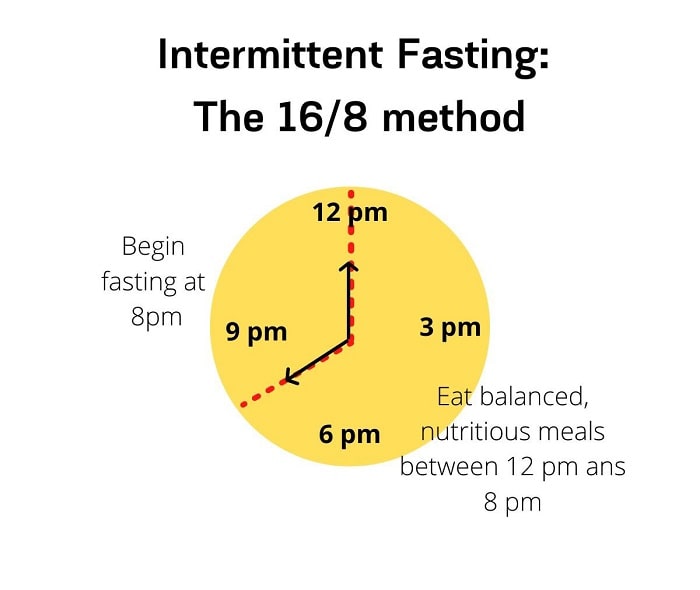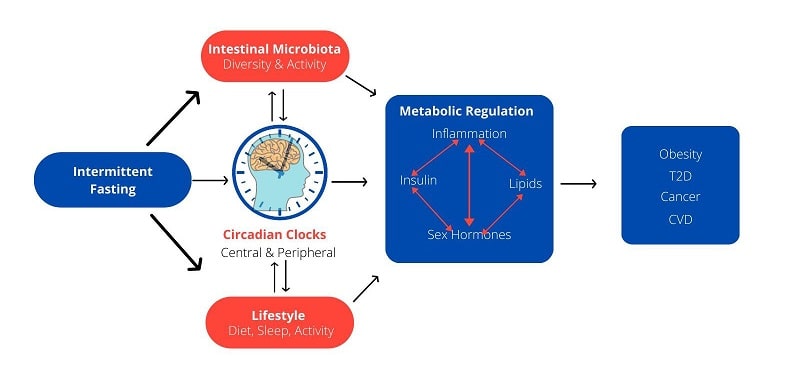 If you grew up in the US, you likely received incorrect information presented as “scientific fact” from your elementary school science teacher or football coach in the form of the pseudoscientific conventional wisdom that “breakfast is the most important meal.” In fact, you’ve probably heard it several times throughout your life from various respected sources. While the necessity of breakfast for good health might seem logical (the rationale being that we need nourishment first thing in the morning to get our day off to an energetic start), the actual research tells us exactly the opposite.
If you grew up in the US, you likely received incorrect information presented as “scientific fact” from your elementary school science teacher or football coach in the form of the pseudoscientific conventional wisdom that “breakfast is the most important meal.” In fact, you’ve probably heard it several times throughout your life from various respected sources. While the necessity of breakfast for good health might seem logical (the rationale being that we need nourishment first thing in the morning to get our day off to an energetic start), the actual research tells us exactly the opposite.
Skipping breakfast – the easiest way to practice daily intermittent fasting (IF) – may be the single best lifestyle adjustment that you can make for improved hormone health after diet and exercise. In this article, we’ll break down the promising discipline of intermittent fasting, how it benefits hormone levels (specifically human growth hormone, or HGH) as well as overall health, and the ways that you can incorporate IF into your regimen.
What Is Intermittent Fasting?
Intermittent fasting is relatively straightforward. Many religious adherents – including Muslims during Ramadan festivities – practice some form of intermittent fasting as a religious rite. Thanks to the mounting support for IF from the natural health community, researchers in the secular world have begun to take a harder look at intermittent fasting and its wide array of impressive metabolic benefits demonstrated in clinical settings.
Several variations of intermittent fasting exist, with benefits and drawbacks for each. However, the simple definition of intermittent fasting is the total restriction of caloric intake for a set period of time (the “fasting window”) followed by a period of eating freely (the “feeding window”). Let’s take a look at several real-world, practical examples of IF that anyone can easily begin.
How Is Intermittent Fasting Practiced?
To begin an IF protocol, you should first understand the basics of the practice: during the fasting window (practiced daily in most plans), your caloric intake should be reduced to zero – no solid foods, no juices, no candies, no gum. The only exceptions to the ban on foods during the fasting window are black coffee (no milk, no sweeteners) or calorie-less teas like green tea or black tea.
Note: There is substantial disagreement among IF practitioners within the community about whether black coffee and tea are IF-friendly due to concerns over whether these substances interrupt the important physiological changes that result in the health benefits in IF practitioners.
However, for metabolic and hormonal health, black coffee and tea will not negate the health gains you make during your fasting periods and may, in fact, supercharge the effectiveness of your IF protocol in terms of achieving better health outcomes. Just make sure that your coffee or tea contains no calorie-containing additives that would break the fast. Following the “fasting window,” as you enter your “feeding window,” you are free to resume your regular (hopefully whole foods-based) eating habits.
A personalized IF plan is very straightforward and easy to implement. In its most basic 16:8 iteration, the daily IF schedule looks like this:

As you can see, in the 16:8 model, you have a 16-hour fasting window (8 of which are likely spent asleep) from 8 pm to noon the next day, followed by a feeding window from noon to 8 pm. The 24-hour cycle then begins again at 8 pm. Many people who begin IF appreciate the simplicity of the program as well as the time it saves in terms of planning meals or rushing to cram a morning meal into a busy schedule.
What Are the Different Types of Intermittent Fasting?
So, we’ve discussed the 16:8 method. But what other options are there for IF? Stretching out the fasting window results in even greater health benefits (more on the health benefits of IF later on). Healthy people can fast for up to 10 days with no adverse effects while snatching maximal benefits. In fact, the authors of one study of more than 1,400 subjects practicing 4-21-day fasts reported a less than 1% incidence of “adverse effects,” conclusively proving the safety of fasts up to three weeks long for people with no underlying conditions.
However, longer, multi-day fasts should ideally be performed with the guidance of a healthcare professional to monitor your safety throughout the fast. Most IF practitioners, though, prefer daily fasting and feeding schedules for convenience and comfort’s sake. The variations of IF practices include:
- 18:6. (18 hours fasting, 6 hours feeding).
- The “Warrior Diet” (20-hour fasts, 4-hour feasts).
- One meal a day (OMAD) (23:1).
- Alternate-day fasting (ADF). Alternate-day fasting protocols call for 24-36 hours or more of total calorie restriction on “fasting days” followed by normal eating habits on “feeding days.” The research indicates similar benefits between ADF and daily fasting regimens, so it’s essentially a matter of personal preference for those who opt for ADF.

Again, generally speaking, longer fasts result in greater benefits. Most IF newcomers start small with the standard 16:8 method and gradually work their way up to find their fasting “sweet spot.”
Is It Safe?
For those among us who have never been exposed to the scientific evidence supporting the efficacy and safety of following an IF regimen, their natural reaction is often along the lines of “Are you insane? That can’t be safe! You’re starving yourself!” Our hunter-gatherer ancestors often went days – even weeks – with little to no sustenance. They survived, as we will explore more in-depth later, through a mechanism called “metabolic flexibility” that, in addition to correcting many hormonal imbalances such as low HGH, helps switch our fuel supply from blood sugar mediated by insulin to run on endogenous fat stores (ketosis).
Many people falsely believe that IF is dangerous when, in fact the reality is the inverse– remaining in a constantly fed state such as we are generally accustomed to is the true danger due to metabolic inflexibility and poor autophagy (more on autophagy later).
What Are the Primary Health Benefits of Intermittent Fasting?
The clinical research documenting the health benefits of intermittent fasting is extensive. Although this is by no means an exhaustive list, the primary health benefits of IF are:
- Metabolic flexibility. (please see next section for more on metabolic flexibility)
- Autophagy. Autophagy, which literally translates to “self-eating” from its original Latin, refers to the physiological recycling of old or dysfunctional cells to be replaced with fresh, healthy cells. Autophagy is always ongoing within the body, but intermittent fasting ramps it up exponentially through complex hormonal signaling processes that IF jumpstarts.
Higher autophagy rates are associated with decreased cancer risk, better overall cell function, and a more protective immune system. - Fat burning. Study after study shows that, due to the increases in endogenous testosterone levels (in men) as well as boosted levels of insulin-like growth factor 1 (IGF-1) and HGH in both sexes and a jumpstarted metabolism, IF practitioners supercharge fat oxidation while retaining lean muscle mass.
- Better cholesterol ratios. IF ups beneficial HDL cholesterol levels while reducing harmful LDL cholesterol and triglyceride levels with impressive efficacy.
Lowering harmful cholesterol and increasing beneficial cholesterol is an important step in reducing your risk of cardiovascular disease. - Improved mental health. If you ask any IF devotee who has practiced consistently for a year or more, they are likely to cite improved mental health as one of the biggest benefits that they have experienced from the protocol.
 Unfortunately, depression and related mental health conditions among stressed-out Americans are on the rise. Conventional antidepressant pharmaceutical treatments like SSRIs don’t work for many patients. Medical researchers, therefore, have taken a much more active interest in the role of diet in mental health as an alternative treatment modality for depression, anxiety, and other common afflictions of the mind.
Unfortunately, depression and related mental health conditions among stressed-out Americans are on the rise. Conventional antidepressant pharmaceutical treatments like SSRIs don’t work for many patients. Medical researchers, therefore, have taken a much more active interest in the role of diet in mental health as an alternative treatment modality for depression, anxiety, and other common afflictions of the mind.
Caloric restriction, such as is imposed by IF protocols, is proven to therapeutically benefit the neuroendocrine system, the complex web of interconnected hormones and nervous system components. By triggering a therapeutic cascade of mood-boosting hormones like endorphins and brain-derived neurotrophic factor (BDNF), IF offers a powerful addition to a mental health treatment plan.
- Optimized hormonal health.* IF optimizes hormone health by correcting the circadian rhythm cycle – the underlying cause of many endocrine disorders and other chronic health conditions.
! The circadian rhythm can be conceptualized as a “master clock” inside the body, directing the release of important hormones like HGH at regular intervals.
IF helps correct circadian rhythm disruptions which, in turn, supports better hormone health.
The Importance of Metabolic Flexibility For HGH Production: How Does Intermittent Fasting Affect Insulin Levels?
Insulin’s primary role is to shuttle incoming excess energy supplies into long-term storage as fat for later use in times of caloric deprivation. When we fast, our insulin levels drop significantly because the metabolic hormone is unnecessary in the absence of food intake.
Once the stored glucose in the body is depleted during IF, we transition away from sugar as our energy source to begin burning fat for fuel. The utilization of stored fat for energy is called “ketosis.”
Although long-term ketosis presents some challenges for hormone health, temporarily dipping into a ketogenic state (such as occurs during IF) is a huge boon for your hormone health. In clinical research, regular IF practitioners exhibited “increased peak HGH concentrations in sleep,” the period in the circadian rhythm during which the pituitary gland releases maximum HGH.
The Metabolic Fat-Burning Mechanism of HGH
HGH is considered an insulin antagonist, meaning it limits insulin’s effectiveness. In turn, metabolic flexibility increases as the body adapts by turning ketogenic. HGH catalyzes lipolysis, the systematic breakdown of lipids from adipose (fat tissue) for energy.
How Intermittent Fasting Boosts HGH Levels
 As mentioned above, the medical literature is replete with research demonstrating that IF boosts HGH release. The pituitary gland releases HGH in episodic pulsations. In a fasted state, the frequency of these pulsatile HGH releases increases significantly.
As mentioned above, the medical literature is replete with research demonstrating that IF boosts HGH release. The pituitary gland releases HGH in episodic pulsations. In a fasted state, the frequency of these pulsatile HGH releases increases significantly.
How to Optimize Your Fasts for Maximum HGH Production
Here are a pair of considerations for achieving maximum HGH release through IF.
- Adjusting the Feeding Window
Because the biggest boost to HGH secretion caused by IF occurs during sleep as shown earlier, you should consider the timing of your IF protocol if one of your primary goals is to achieve elevated HGH levels. For optimal HGH production, shift your feeding window to earlier in the day so that you are deeper into the fasted state once you hit the hay. For example, while the standard 16:8 feeding schedule runs from noon to 8 pm for most people, you might want to move your own feeding window to something more like 8 am to 4 pm instead. That means you stop eating at 4 pm, giving yourself a head start on the fast so that your fasting-induced HGH release is even greater during sleep.
- Low-Carb, Whole Foods-Based Diet
It’s important to remember that following an IF protocol doesn’t offer carte-blanche approval to eat anything you want during your fasting window. You should still focus on eating healthy foods. Avoiding excessive carbohydrate intake (from starches like grains and potatoes, candies, sugar-loaded sodas and fruit juices, etc.) will help keep insulin in check and further boost HGH levels.
The Bottom Line on Intermittent Fasting and HGH
For many patients with an HGH deficiency, the combination of HGH therapy and IF is a powerful dual treatment modality that offers impressive results. If you or a loved one has experienced the signs of an HGH deficiency and would like to explore your therapeutic options with one of our experienced providers, contact us today.
Together, we will get started ASAP on your journey to recovered hormonal health.

